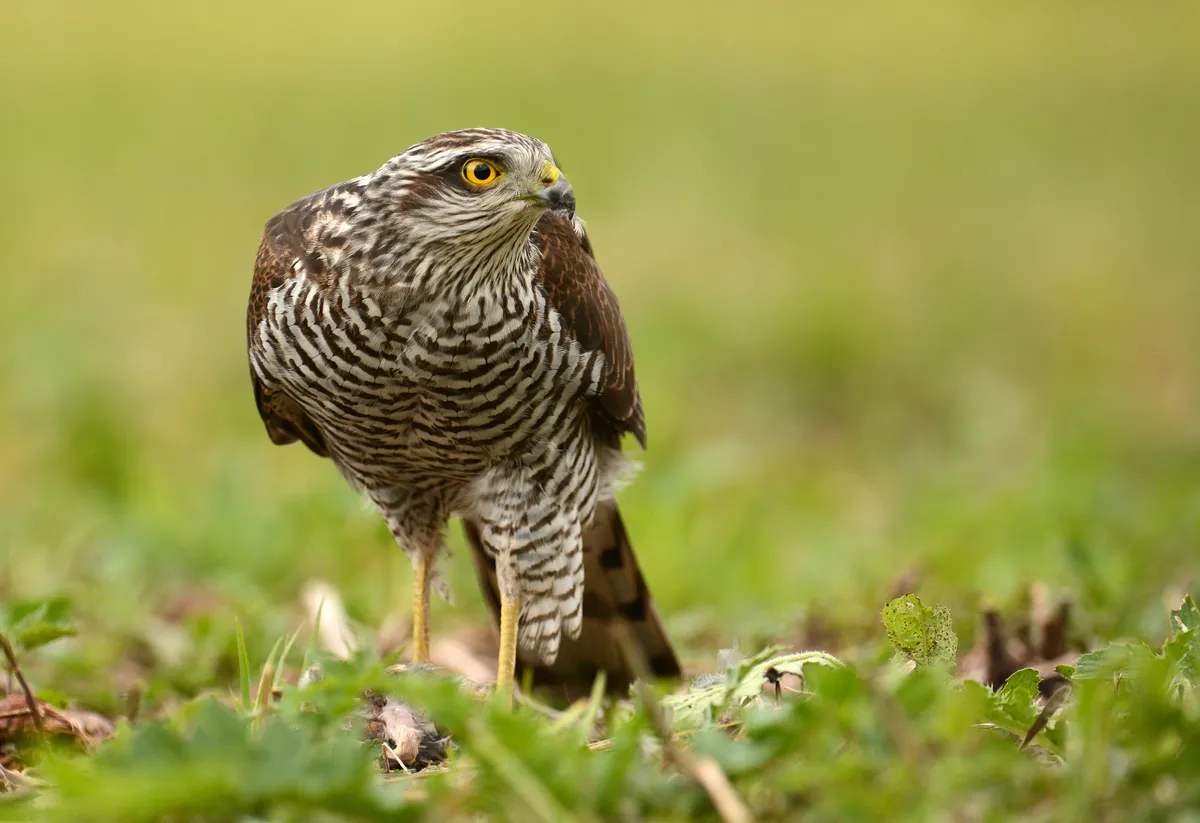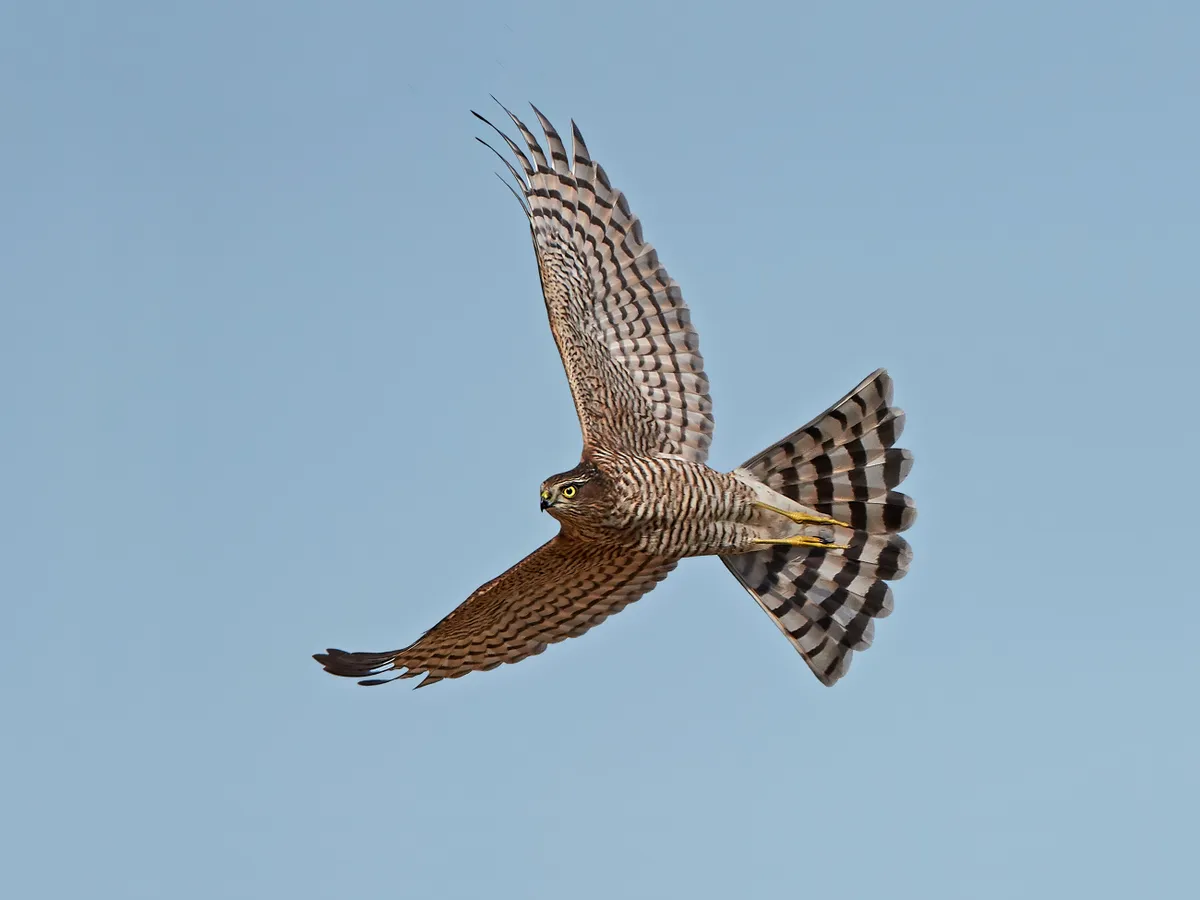1
Are sparrowhawks getting more common?
While the sparrowhawk is now one of the most widespread birds of prey in Britain, until a few decades ago it was more or less extinct in many eastern counties. This was partly due to persecution, but also due to pesticide use in agriculture. As well as killing individuals, the accumulation of harmful compounds thinned their eggs, which increased breakages during incubation. This led to a population decline.

2
Do sparrowhawks kill too many small birds?
Since bouncing back, sparrowhawks have spread into many suburban parks and gardens. Due to their efficiency at catching small birds, they have come into conflict with some garden birdwatchers, and have been blamed for the widespread decline of many songbirds.
It's true that the recovery of the sparrowhawk population from the past impact of organochlorine pesticides coincides with a marked decline in some songbird populations. However, detailed studies, such as at Wytham Woods in Oxfordshire, have not found a causal link – for example, breeding tit populations in the woods were not conspicuously higher in years when sparrowhawks were absent.

Though one study estimated that the species took 18–27 per cent of young blue tits fledged from a nestbox population, even this level of predation was not enough to depress breeding densities in future years.
It is worth noting that most songbirds are predators too, and we don’t get quite so worked up about a blue tit killing a caterpillar or a song thrush eating a snail.

3
Where do sparrowhawks nest?
Sparrowhawks prefer to nest in dense woodland and breed between May and July. Until the chicks are old enough to be left alone, the male sparrowhawk does all the hunting, feeding both the young and the female. Then both parents hunt for the juveniles, and they continue to do so up to a month after the young sparrowhawks have left the nest.

4
How do sparrowhawks hunt?
Sparrowhawks rely on the element of surprise and as such will often follow a regular route to get close to potential prey, which in gardens means using the cover of a hedge or shed. By moving feeding stations around your garden and keeping them close to cover, you can reduce the chance of a sparrowhawk attack.

If you've got a particularly popular garden feeding station, you might receive a visit from a hunting sparrowhawk a few times per day. Even if you don't see the sparrowhawk, you might hear the frantic alarm calls from all the small birds in the garden.
5
Are some sparrowhawks bigger than others?
Female sparrowhawks are about twice the weight of males, one of the largest differences between sexes in any bird of prey. While this enables her to carry extra body reserves needed for reproduction, and to go for several days without a meal, it does mean she is a less agile hunter than the male.
Female sparrowhawks are therefore more likely to take larger prey like pigeons, while male sparrowhawks will typically hunt small songbirds like tits, finches and sparrows.

6
What colour eyes do sparrowhawks have?
The colour of a sparrowhawk’s eye depends on its age and gender. Typically younger birds have greenish-yellow eyes which become brighter yellow within the first couple of years of their life. In some older sparrowhawks, the eye colour can become orange or, occasionally, red.

7
How do you identify a sparrowhawk?
Sparrowhawks are small, broad-winged raptors with long tails and long, thin yellow legs. Adult males have slate-grey upperparts and fine rufous barring underneath. Females have brownish-grey upperparts and less rufous barring than the male. They have a more prominent white line above the eye.

